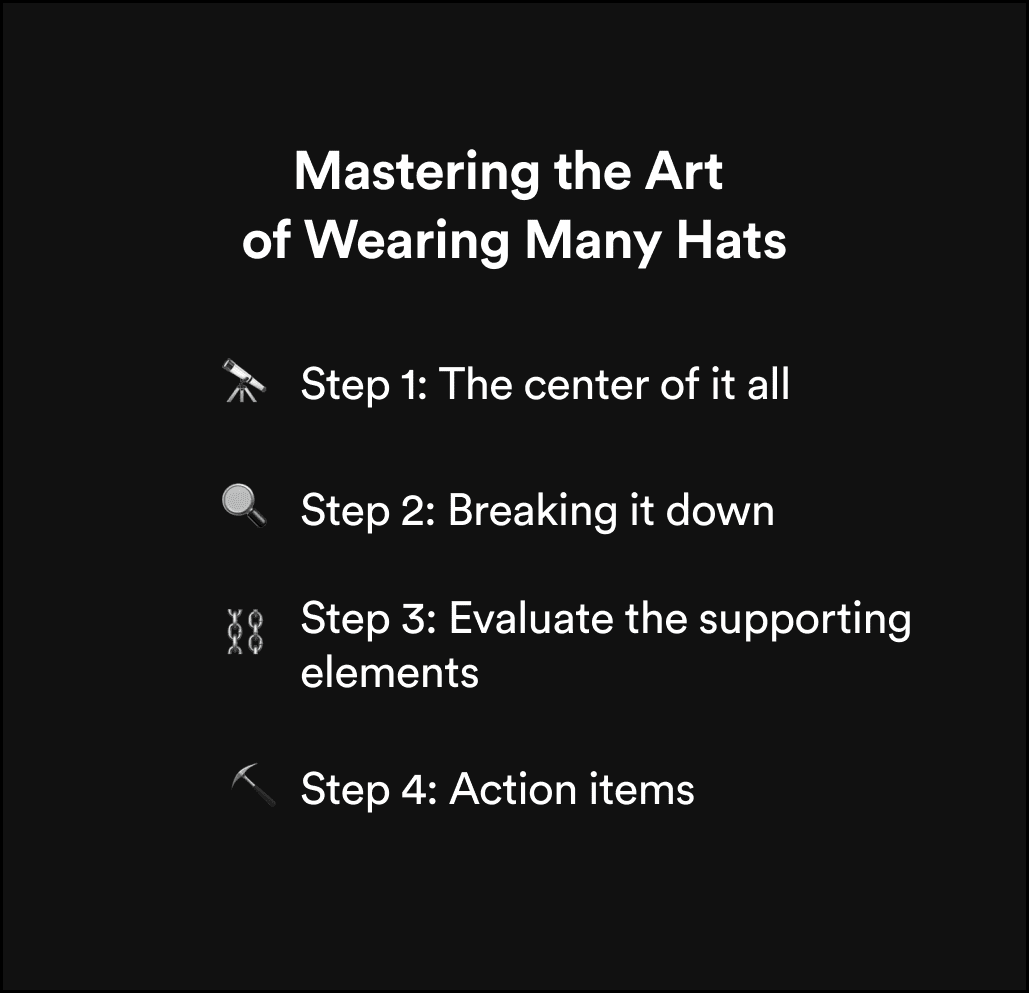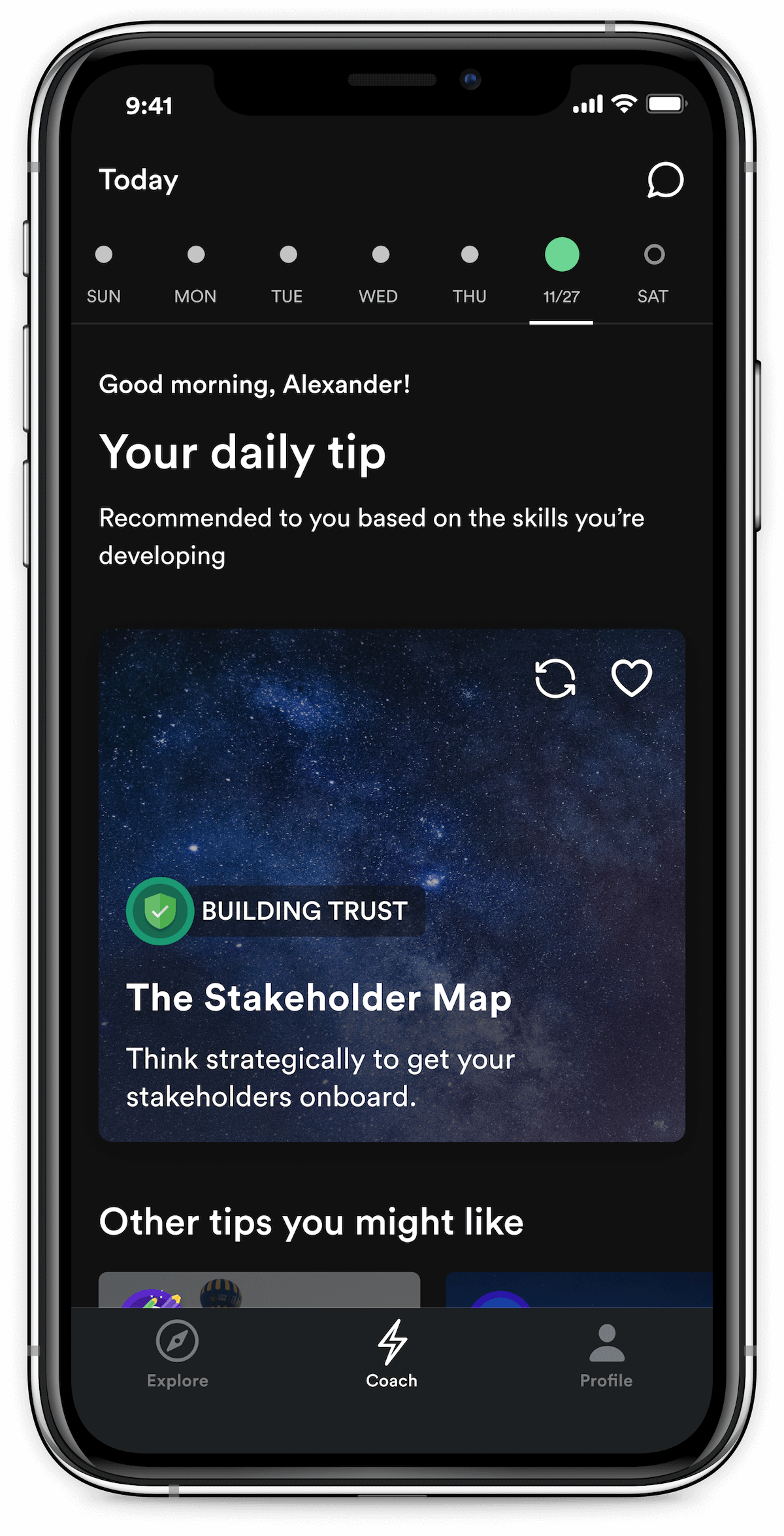Mastering the Art of Wearing Many Hats
Use a mind map technique to get clarity on all of your responsibilities.

Inspired by:
Elena Grahovac, Engineering Manager at GetYourGuide

🧢 Mastering the art of wearing many hats
When you step into a new management role, it can be a lot to balance: loads of stakeholders, team members eager to have an impact, your boss looking for wins, and your own tasks on top of that!
Elena Grahovac knows exactly how this feels. As both Engineering Manager and Product Manager for her team at GetYourGuide, she’s constantly working in a complex environment, juggling a lot of balls.
That’s why she uses a responsibility mind map technique to dig into her areas of responsibility.
🔭 Step 1: The center of it all
Starting from the center of your mind map, ask yourself: “What am I responsible for?”
For Elena, her first level nodes are: • Myself • My team • Business impact • Relationships with other Engineering Managers • Technical excellence of my team’s products
🔍 Step 2: Breaking it down
Next, you can work on expanding your mind map. Break down each node, and take a deeper look at your skills. Where are you doing well? What are the gaps?
Add the high-level responsibilities for each node, and then expand your sub-nodes one level at a time. For example, this is how Elena broke down “my team”: • Team performance • Employee journey • Team health
After you have expanded all the nodes, you can begin to assess how things are going and where there are areas for growth.
⛓️ Step 3: Evaluate the supporting elements
Take a look at your final nodes and evaluate your confidence in each responsibility on a scale of 1 to 10. Then ask yourself, “What can support me so I can stay successful?” The answer may be:
• Processes • Tools • Techniques • Questions • People/Mentors
Jot that down next to the node. Are there gaps? Ask yourself how you can find new sources of support. Add those to your mind map over time as you learn about new ways to grow!
⛏️ Step 4: Action items
You should now have a broad overview of all of your responsibilities and processes. For any areas you rated below a 6, ask yourself, “What are the next steps I can take to get more support?”
Come back once a month and re-rate each area to see how well you’ve been able to improve, or where you need to keep your focus.
🏋🏿♀️ Leveraging your mind map
Your mind map can also help you support your team. You could ask each team member to do the mind map exercise in a 1:1. Then have a look at where you and your team member overlap, how you can support them, and where you might want to outsource support for their growth.
Over time, you may find that your mind map begins to change! Maybe your team becomes responsible for a new project, or you get promoted. Try to review your mind map quarterly to give yourself the best chance of staying on track with all of your responsibilities.

Become a world-class leader in two minutes a day